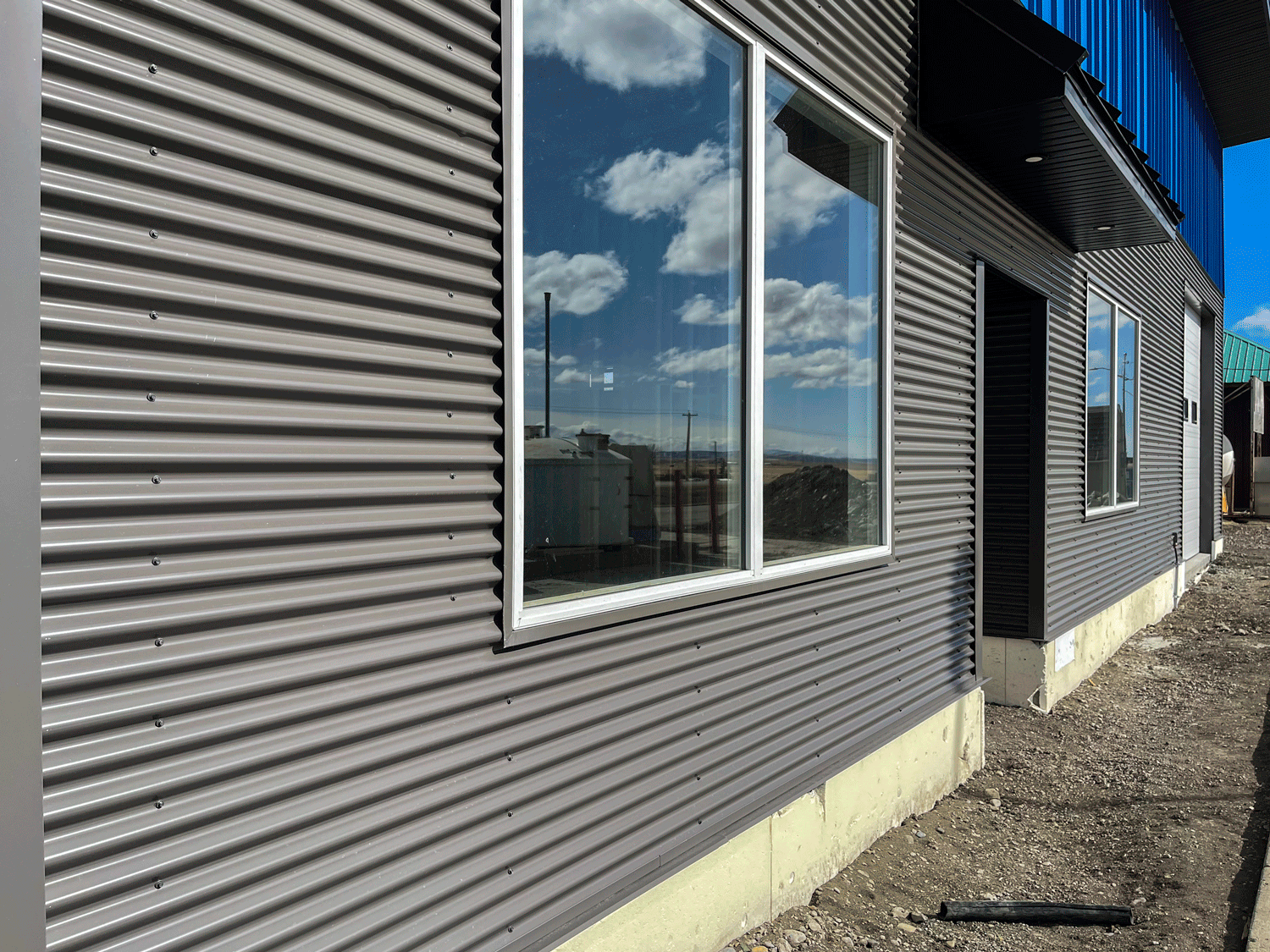

Strength you can stand under..
SERVICING THE NIAGARA REGION & BEYOND

SIDING
METAL SIDING
METAL SIDNG OPTIONS at TS Metal Roofing! How do you choose?? Below is a guide to help make you make the best selection for your dream home! All siding comes in endless amount of colours to perfectly suit your vision.
1. Diamond Rib Metal Siding
Description:
Diamond Rib metal siding features a distinctive ribbed pattern where the ribs form a diamond or chevron-like shape. This siding is often made from galvanized or coated steel and provides a modern industrial look with added visual interest due to its geometric texture.
Key Characteristics:
Pattern: Diamond-shaped or angular ribbing, often repeating across the panel.
Material: Steel or aluminum (often pre-finished for corrosion resistance).
Look: Contemporary, textured, and bold.
Applications: Commercial buildings, agricultural structures, accent walls in modern architecture.
2. Corrugated Metal Siding
Description:
Corrugated metal siding is one of the most traditional and widely recognized forms of metal siding. It features a wavy, repeating "S" or sinusoidal pattern and is typically made from galvanized steel or aluminum.
Key Characteristics:
Pattern: Wavy or ridged (can also come in squared or boxy versions).
Material: Galvanized steel, aluminum, or sometimes weathering steel (like Corten).
Look: Industrial, rustic, or agricultural.
Applications: Barns, sheds, industrial buildings, and modern rustic homes.
3. Board and Batten Metal Siding
Description:
Board and Batten metal siding mimics the traditional wood board and batten look, with wide vertical panels ("boards") and narrower raised strips ("battens") that cover the seams. It provides a classic, vertical aesthetic often used in farmhouse and modern rustic architecture.
Key Characteristics:
Pattern: Alternating wide and narrow vertical sections (like wooden board and batten).
Material: Pre-painted steel or aluminum panels.
Look: Clean, vertical lines; rustic to contemporary, depending on color and finish.
Applications: Residential homes (especially farmhouses and cabins), barns, and commercial facades.
4. Aluminum Siding
Description:
Aluminum siding is a lightweight, rust-resistant metal siding that was especially popular from the 1940s–1970s. It offers a smooth or textured finish and can be painted in a wide variety of colors.
Key Characteristics:
-
Material: Painted or coated aluminum.
-
Appearance: Smooth or embossed panels; horizontal or vertical styles available.
-
Benefits: Fire-resistant, insect-proof, resists rust, recyclable, low maintenance.
-
Applications: Homes, especially in areas with high moisture or where fire resistance is a concern.




SIDING
Types of Non- Metal Siding:
1. Vinyl Siding
Description:
Vinyl siding is a durable, plastic-based exterior cladding commonly used in residential construction. It's designed to resemble painted wood clapboard and comes in a wide range of colors and styles.
Key Characteristics:
-
Material: PVC (polyvinyl chloride).
-
Appearance: Horizontal planks (or shingles), smooth or textured to mimic wood grain.
-
Benefits: Low maintenance, affordable, fade-resistant, won't rot or warp.
-
Applications: Widely used in residential homes, especially for cost-effective renovations or new builds.
2. Board and Batten Siding
Description:
Board and Batten siding features wide vertical panels ("boards") with narrow strips ("battens") covering the seams. It’s a timeless style that evokes traditional barns and farmhouses but is also popular in modern architecture.
Key Characteristics:
-
Material Options: Wood, fiber cement, vinyl, or metal.
-
Appearance: Vertical orientation with a rhythmic, alternating wide-narrow panel design.
-
Benefits: Stylish, adds depth and dimension, complements rustic or contemporary designs.
-
Applications: Homes, cottages, farmhouses, accent walls.
When made from vinyl or fiber cement, this style offers the classic board-and-batten look with modern durability.
3. Insulated Vinyl Siding
Description:
Insulated vinyl siding is vinyl siding backed with rigid foam insulation (usually EPS - expanded polystyrene). It improves a building's thermal performance while offering a more solid feel and appearance than standard vinyl.
Key Characteristics:
-
Material: PVC with attached foam insulation.
-
Appearance: Same as regular vinyl, but panels often appear straighter and sturdier.
-
Benefits: Increased energy efficiency, soundproofing, durability, and impact resistance.
-
Applications: Residential buildings in colder climates or for energy-conscious homeowners.





